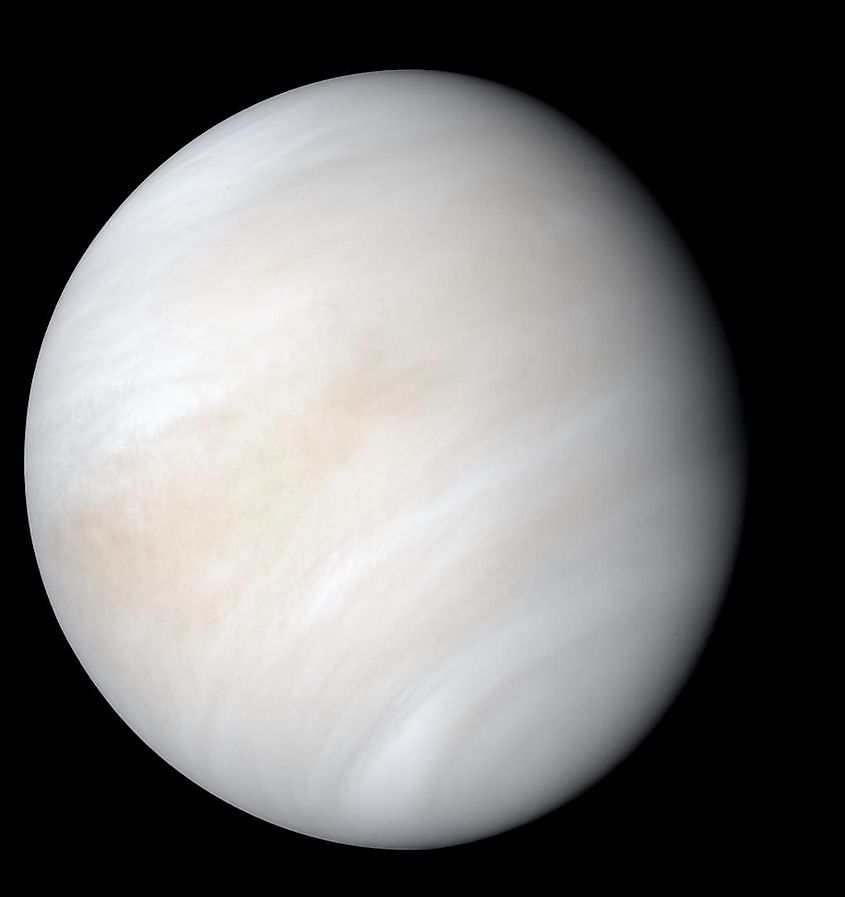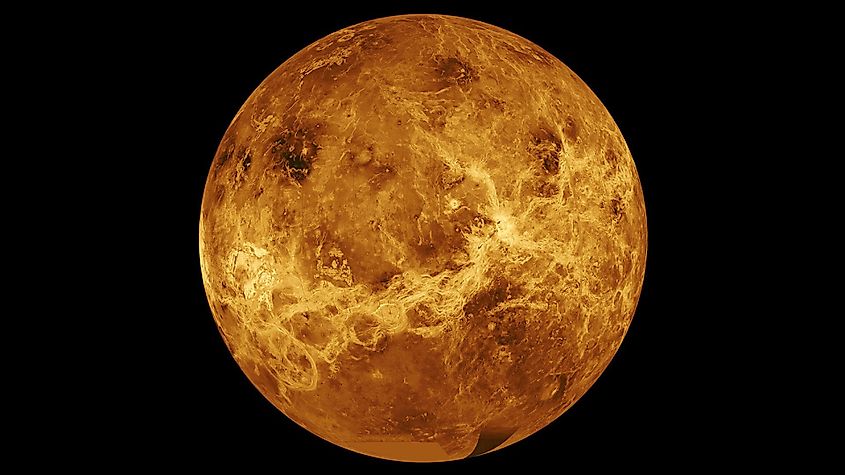
Why Is Venus The Hottest Planet?
Venus is the closest planet to the Earth and the second closest planet to the sun. Although Venus is not the closest planet to the sun, it has the hottest surface temperature of any planet in the solar system, averaging at 842 degrees Fahrenheit (450 degrees Celsius). The average surface temperature on Venus is hot enough to melt lead, and it is hotter than the surface of Mercury. If distance to the sun alone determined the surface temperature of a planet, then Venus should be significantly colder than Mercury. Mercury is 36-million miles (65-million kilometres) away from the sun, while Venus is 67-million miles (108-million kilometres) away from the sun. Stranger still is the fact that Venus is completely covered in clouds that reflect most of the sunlight that reaches Venus. Venus reflects about 70% of the sunlight that hits it, which is significantly higher than the 30% that Earth reflects. In fact, based on the amount of sunlight that Venus reflects back into space, its surface should be colder than Earth’s. So why does Venus have the highest surface temperature in the solar system?
The Atmosphere Of Venus

Venus’s distance from the sun and the amount of sunlight it reflects are not the most important factors that determine its temperature. Rather, it is the atmosphere of Venus that determines how hot it is. The atmosphere of Venus is extremely dense, having a density 90 times greater than the atmospheric density on Earth. An atmosphere of higher density will be more able to trap heat near the surface, yet density alone cannot explain the temperature of Venus. It is the atmospheric composition of Venus that causes it to be so hot. 96% of Venus’s atmosphere is carbon dioxide. Earth’s atmosphere is approximately 0.04% carbon dioxide. Carbon dioxide is a greenhouse gas that can absorb and trap incoming heat, keeping it near the surface of a planet. As a greenhouse gas, carbon dioxide allows infrared radiation from the sun to pass through it, yet that same radiation cannot escape. The more carbon dioxide in an atmosphere, the more sunlight gets trapped. On Earth, carbon dioxide helps maintain a stable temperature over time, so long as the amount of it stays stable. A little bit of a greenhouse effect is a good thing, yet in the case of Venus, things got out of hand. With so much carbon dioxide in its atmosphere, any sunlight that can penetrate the cloud layer gets trapped near the surface. Over time, the amount of heat simply builds up. Venus experiences what’s called a runaway greenhouse effect, causing Venus to have the highest surface temperature in the solar system.
How Did Venus Get So Hot?

Geologic evidence on Venus suggests that it has not always experienced a runaway greenhouse effect. In fact, Venus likely had oceans many billions of years ago. As the sun gets older, it also gets hotter. Billions of years ago, the sun was colder than it is today. There was a time when Venus orbited within the sun’s habitable zone. As the sun got hotter, Venus also got hotter. Over time, its oceans boiled away. Oceans are carbon sinks, meaning they can absorb vast amounts of carbon dioxide. With the loss of its oceans, Venus also lost one of its largest carbon sinks. As water disappeared from its surface, it became difficult for carbon dioxide to become stored in rocks. Venus also experienced a large number of volcanic eruptions, adding even more carbon dioxide into the atmosphere. The loss of its carbon sinks meant that the amount of carbon dioxide in Venus’s atmosphere could only go up, resulting in the planet we see today.











